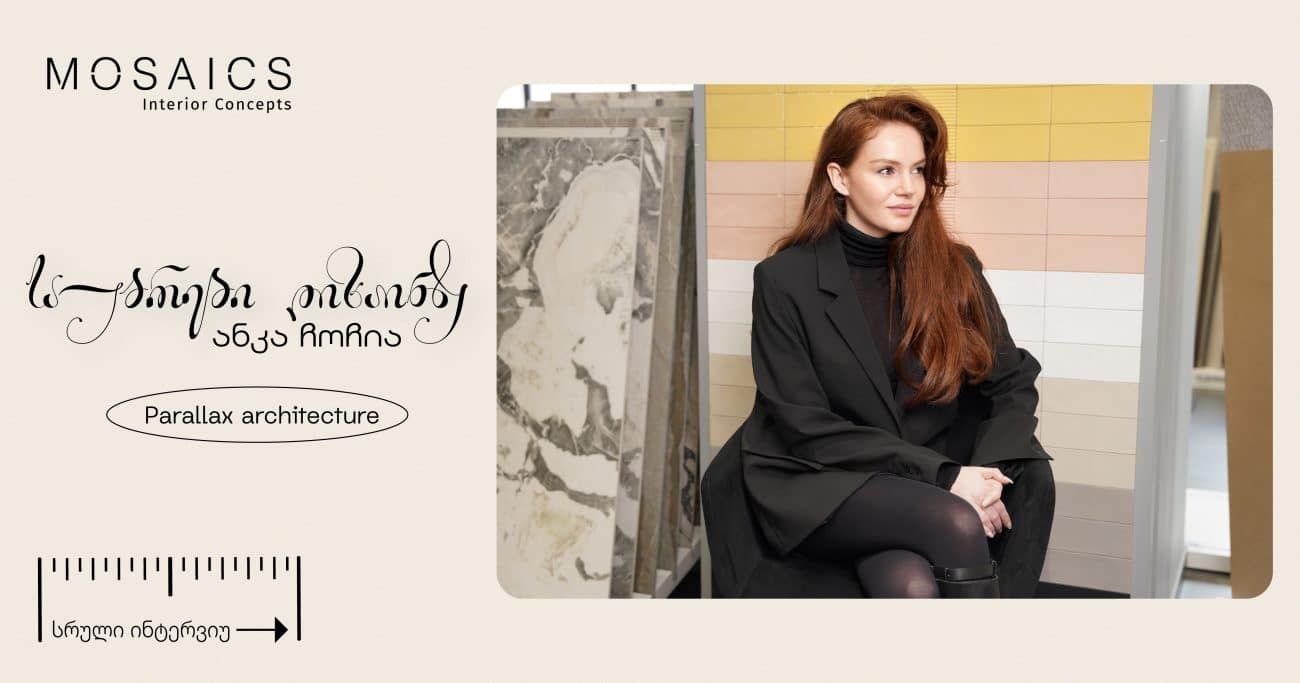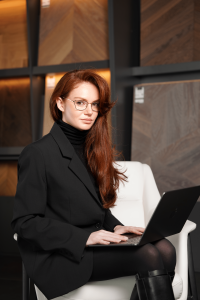
This time, the guest of the "Conversations on Design" column is architect Anka Chochia.
Anka: What sparked your interest in architecture?
I am an emotional person and I have always been keenly aware of my environment — the texture of materials, the movement of light in space, or even the logical order in which spaces were arranged around me, have interested me since childhood. I remember how I loved building toys — this was probably the first form in which I felt contact with space. And when I first saw architectural drawings — it was a completely unknown, but surprisingly logical and creative language. From that moment on, I became interested in architecture as a game where logic, emotion, and form come together in a single whole. For me, architecture has never been just about designing a building. It was to some extent a mathematical game and also a response to people's emotional, physical, and functional needs.
If not architecture, what field would you have chosen?
Psychology, mathematics, and cinematography — these three fields have always been associated with analysis, spatial thinking, and the observation of how people perceive their environment. Psychology points to emotional layers, mathematics to logical structures, and cinematography to narrative and mood in space. Architecture seems to be a combination of all of these, but in these fields too I could express the same inner interests — observing people, perception, and the thinking behind form.
 The first space you discovered that left an indelible impression on you?
The first space you discovered that left an indelible impression on you?
The first space that made an indelible impression on me was the Ulm Cathedral in Germany. I first saw it when I was 15, and I remember being struck by the sense that scale itself changes your inner space. In that moment, I felt how architecture can make you feel awe, balance, and awe at the same time – just by the way space and form are organized into a whole.
Of your completed projects, which would you choose and why?
It's always hard for me to single out one of my projects. Each one has such a different context, task, and emotion that it's as if they all describe me at the same time. Some of them are related to a stage of professional development for me, while others are related to the human relationships I've developed outside of the project.
An architect whose work inspires you?
It’s a very difficult question — there are so many architects who fascinate and inspire me in completely different directions that it’s hard to single out just one. However, the biggest inspiration lately has been Neri Oxman. Her approach to the symbiosis of architecture, technology, nature, and matter is, for me, a vision of the future, where architecture becomes a living organism.
What is more important – aesthetics or practicality?
Aesthetics and practicality are equally important. Without the other, one becomes either a decorative element or lifeless. When both are in harmony, architecture as art emerges.
What does good architecture mean to you?
Good architecture is a space that connects with people emotionally. That feels its environment, responds to needs, and leaves a lasting impression – even if you can't remember its name.
What color or material do you like the most and how do you use it in your projects?
Warm beige tones and natural textures – especially wood and stone. I use them not only for aesthetics, but also to convey a sense of coziness and naturalness to the space.
What trends would you highlight in the exterior at the moment?
A sustainable and natural materials-oriented approach, vertical gardening, human-scale buildings, and energy-efficient facades – all of which build a bridge between technology and ecological needs.

What challenges do you see in modern Georgian architecture today? The biggest challenge in modern Georgian architecture is the lack of a common identity. It often lacks context and orientation to local culture. Also, the quality of construction and the lack of long-term vision remain systemic problems. Which architectural projects in Georgia would you highlight?
When answering this question, I first think not of modern projects, but of places with older cultures and identities — for example, Tusheti and Svaneti. In these regions, architecture not only fits the landscape, but is also a continuation of history and lifestyle.
Which city or place in the world do you find most inspiring?
Italy. Italy and again Italy. Every street, facade, museum, or even a simple wall there is a trace of culture, art, and time.
What genre of music best expresses your style?
I wish my answer were classical music. With its simultaneous airiness, weight, and harmony. However, in reality it would probably be instrumental jazz – it seems to have a clear structure, but there is also room for improvisation.
What is your attitude towards trends and how much do you take them into account?
Trends are more of a signal to me than a guide. I look for what is consistent with the nature of the project and the demands of the time – but I never make trendiness the sole basis for a major decision.
When you think of comfort at home, what space comes to mind first?
A space with big windows, natural light, lots of plants, cozy and spacious furniture – for example, a living room, or a study. Where I can just sit down and be myself.


















